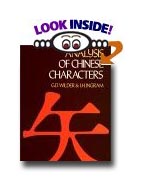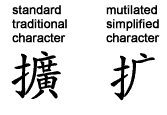-
About the Chinese character: Chinese writing dates back to over 5000 years ago. Chinese characters evolved from pictographs to more abstract ideograms to the modern-day character, which bears a slight resemblance to its pictographic origins.
The characters are divided into 3 main categories : pictographs , ideograms , phonograms . Each character is a word by itself, and is written in a flowing and balanced way.
You will notice that your browser has the option of viewing Chinese characters in Traditional or Simplified forms. Some other sites provide your translation in simplified characters which are abbreviated forms which might not be recognizable to all Chinese . This site provides you with standard traditional Chinese characters which are not only recognized by Chinese but also by Japanese and Koreans. More importantly, our site is determined to preserve the history and artistry of the traditional character.
Why are there traditional and simplified characters? Traditional characters are the standard characters with centuries of history and culture embodied in them. There is a true meaning and history behind each traditional character which is derived from centuries of usage as a pictogram, phonogram or ideogram.
In an effort to wipe out illiteracy, the Communist government in China introduced in 1956 a system of simplified characters which were easier to remember than the intricate traditional characters. The intention was good, but the result is devastating. Over 2000 Chinese traditional characters have been changed by the government into the simplified form by reducing the number of strokes, and thus changing the entire form and balance of the character. (see example to the right)
In some cases, even the meaning of the butchered character has been changed.
. As many have complained: 親(亲)不見,愛(爱)無心,
產(产)不生,廠(厂)空空,
麵(面)無麥,運(运)無車,
導(导)無道,兒(儿)無首,
飛(飞)單翼,湧(涌)無力;
有雲(云)無雨,開關(开关)無門,
鄉(乡)里無郎 e.g. the symbol of "heart" has been taken out from the character for "love", the "head" has been chopped off the character for "child", the double wings for the character of "fly" has been truncated to a pitiful single wing, the symbol of "life" has been eliminated from the character for "giving birth"...
This type of "short-hand" writing does not embody Chinese art, culture and history.
The characters provided by this site are all traditional characters so that the form, beauty and essence of THE CHINESE CHARACTER can be fully appreciated.
It is great to see that China has finally risen like a phoenix, recovering from the massacre of our people, snatching of our land, looting of our treasures, and trampling of our culture and pride by these foreign countries. Now that illiteracy has been effectively eliminated, it is my sincere hope that traditional characters will be reinstated as one of the official writing systems together with the simplified one.
Only then will our beautiful heritage be continued and Chinese culture be preserved through the traditional way of writing, and the pain and suffering inflicted by foreign invasion be remembered through the simplified version of writing.
|
|
-
About written Chinese and spoken Chinese: The same Chinese character, though written the same way, may be pronounced differently in different dialects. There are many dialects in Chinese, with the 2 major ones being Mandarin and Cantonese. Many Chinese software offer pronunication input methods for both dialects.
Mandarin (also known as Putonghua) is widely spoken in China, Taiwan and Singapore, while Cantonese is prevalent in Hong Kong, southern China, Southeast Asia, Macau and Chinatowns overseas.
Many words sound similar in these dialects but there are more tonal variations in Cantonese than Mandarin. Our translation team is fluent in both dialects, and thus will pick a phonetic translation which will sound right in both Mandarin and Cantonese.
Some history : Cantonese has preserved more elements of classical Chinese in its pronunciation. Many ancient poems (for instance, from the Tang dynasty 700 AD) do not rhyme in Mandarin, but rhyme very well in Cantonese.
In 1911, the government of Sun Yat-sen had overthrown the Qing dynasty and founded the first Chinese republic. Officials found themselves governing people spread across a vast country, so besides a unified writing system, they needed a unified spoken dialect. Cantonese lost out to Mandarin - as it was called then - by only one vote in a historic poll taken in 1913 to decide on a unified spoken language for China. The Communist government continued its use after its takeover in 1949, and has referred to Mandarin as Putonghua. However, the different regions of China still speak Mandarin with heavy local accents. People in the southern part of China has also continued using Cantonese as the mother tongue.
-
Chinese Characters and Kanji: The Chinese pictographic system of writing was imported to Japan many centuries ago, and is known as " Kanji " (In Japanese, kan+ji = Chinese+word 漢字). Most kanjis have the same meaning as the original Chinese characters, but some have evolved over time in Japanese usage and the meanings are different from the Chinese characters used nowadays. As a matter of fact, there are three forms of Japanese writing. The oldest, originating in China, is Kanji. The other 2: Hiragana based on the characters of Kanji, and Katagana based on imported foreign words were invented in Japan. Hiragana and Katakana are phonograms, which represent sounds, unlike the Kanji ideograms, which express concepts.
As for Korea, Chinese characters were introduced to Korea as early as the Gojoseon period. The Old Korean language was initially written in Hanja, a script based on Chinese characters. This explains so many Korean words are borrowed from Chinese. Just like Japanese Kanji, the word Hanja in Korean means Chinese+word 漢字
-
Custom Calligraphy Design: You can choose from 10 designs for your translation.
Style 1 (Classic) is a traditional brush stroke style prevalent in use from the ancient times to nowadays.
Style 2 (Cursive) is an elegant cursive style highlighting the intricacies of Chinese brush calligraphy.
Style 3(Fluid) marked by its fluidity, also known as the "running" style.
Style 4 (Grass) is a unique flowing style which is like "walking on grass", handwritten by the webmaster.
Style 5 (Old) is the clerical style originating from the Tsun dynasty (230 BC).
Style 6 (Emboss) is a design by the webmaster combining the techniques of traditional calligraphy and modern computer design.
Style 7 (Slim) is known as Shou Jin Shu (Slim Gold Style), the signature calligraphy of Emperor Sung.
Style 8 (Pictorial) stems from original Chinese oracle scripts with a pictorial inference.
Style 9 (Engrave) represents the Ngai Bei stone engraving style .
Style 10 (Brush) is intricately done by hand with the Chinese brush. This custom design by the webmaster is one-of-a-kind.
|
Style 1:
Classic style
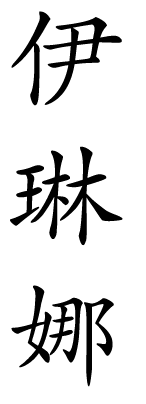 | Style 2:
Cursive style
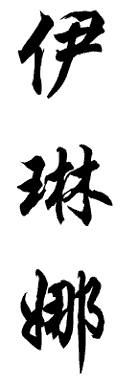 | Style 3:
Fluid style
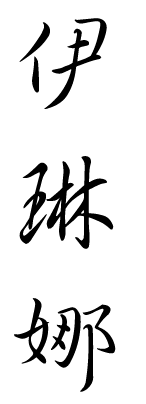 |
Style 4:
Grass style
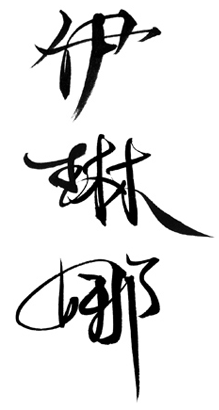 |
Style 5:
Old style
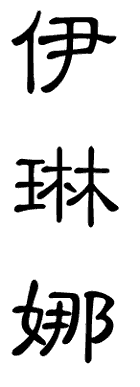 |
Style 6:
Emboss style
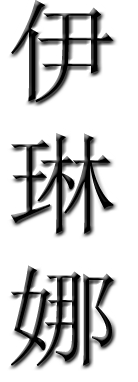 | Style 7:
Slim style
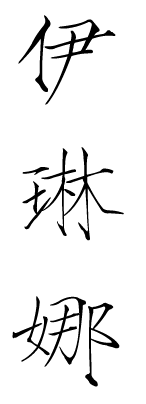 |
Style 8:
Pictorial style
 | Style 9:
Engrave style
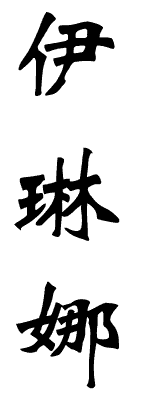 | Style 10:
Brush style
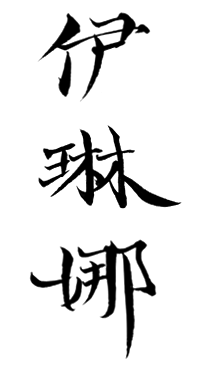 |
|

